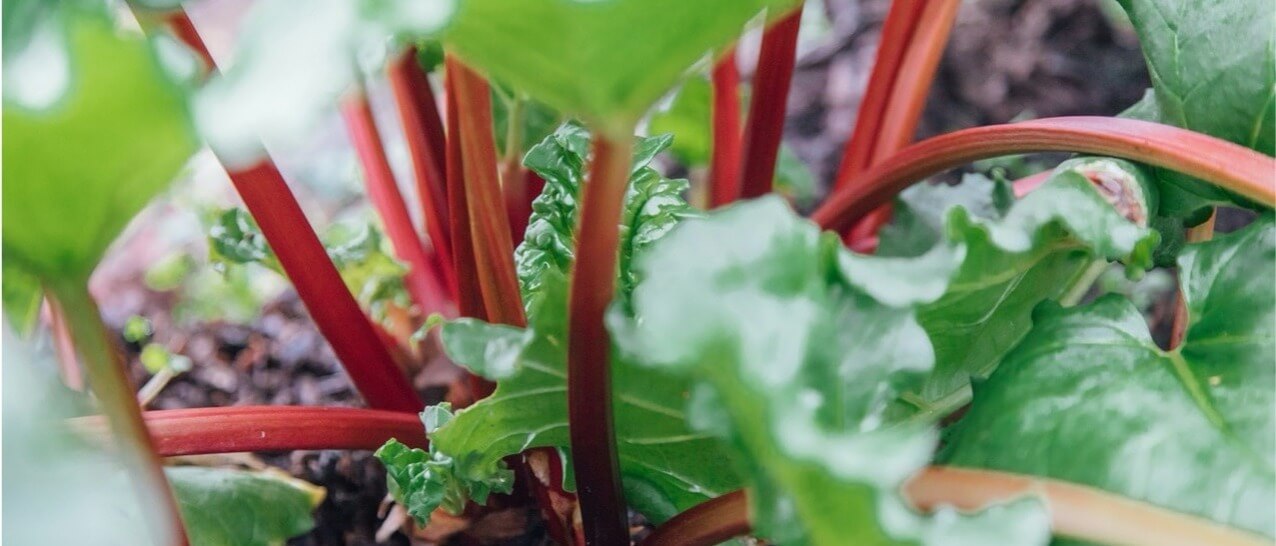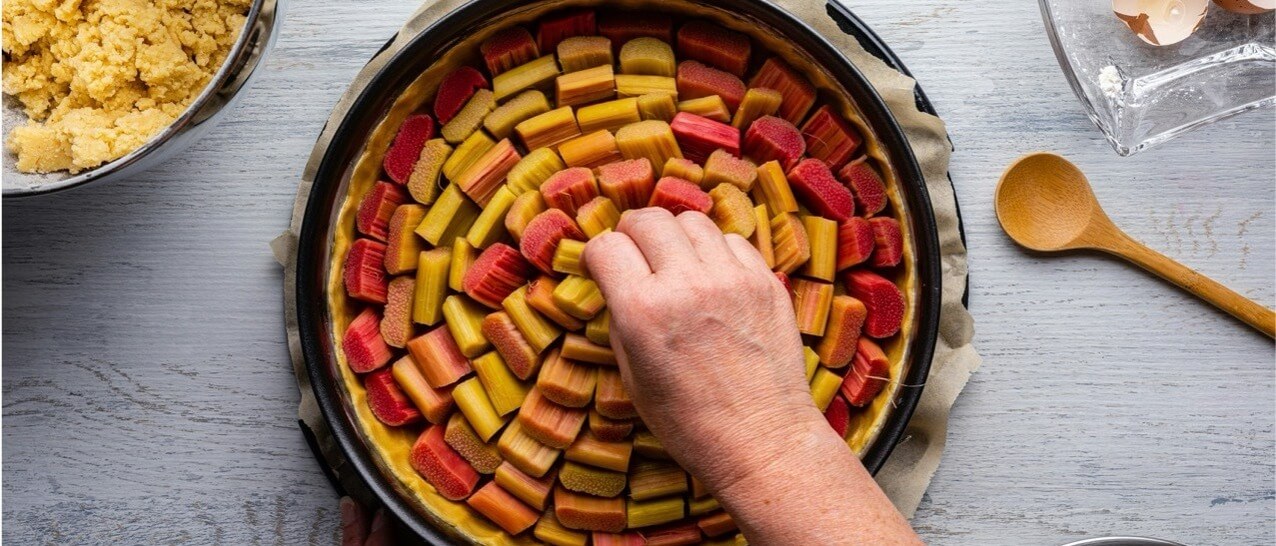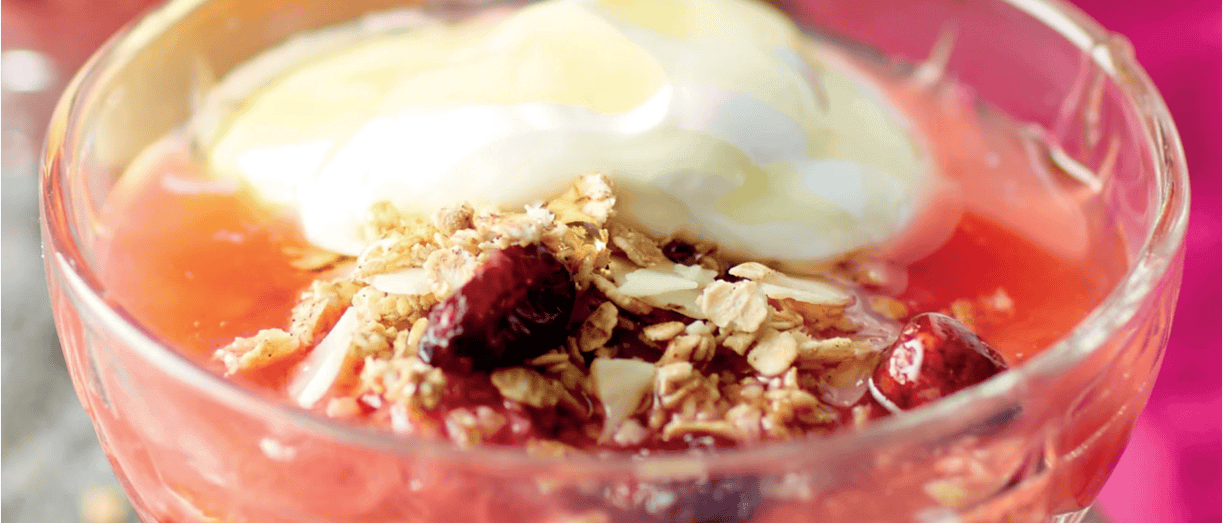



Colour: Pink stalks with bright green leaves.
In season: March – June
Power to perform: Rhubarb is a great source of vitamin K, a key nutrient for healthy bones and for clotting blood, helping heal wounds.
Grow me: Rhubarb can be grown in a ‘forced’ or natural way. Forced rhubarb is kept covered up in the dark, producing pale stalks that grow quickly as the plant searches for light. This means it can be harvested a month earlier than natural rhubarb, which is in season from March to June. Rhubarb plants are very large, with big leaves that hide the pink stalks.
Did you know?

Ideas garden
Remember to ask an adult's permission before experimenting with any rhubarb ideas!
Rhubarb can be used as a natural dye, which is great for adding a colour to your eggs during Easter! Make sure you boil your eggs first, or you won’t be able to eat your colourful creations afterwards.
After cutting up and simmering the rhubarb for several minutes, strain it and keep the water, which will now have a warm, orange to pink shade.
Get started: Wait for the water to cool down, and gently add your eggs, making sure they are submerged. Keep them in the water for overnight and wake up to coloured eggs!
Go further: Create marbled eggs by placing your boiled eggs in a cup filled with a mixture of cooking oil and natural dye or research other spring traditions to explore!
(Don’t forget to wear gloves when you put your eggs in, or you might end up with pink fingers!)

How about adding rhubarb to your favourite crumble or fruit pie recipe? The added sour tang will make any pudding pop! Or, for the more adventurous, try roasting rhubarb in honey to create a unique side dish to accompany a savoury main.
Rhubarb is also delicious stewed with sugar and a splash of water to make a rhubarb sauce or jam. If you want to experiment with its unique flavour, why don’t you try this healthy rhubarb and granola recipe?

Ask an adult to share your rhubarb adventures with us on social media using #GetSetEatFresh or by uploading a showcase on the Get Set to Eat Fresh community page.
